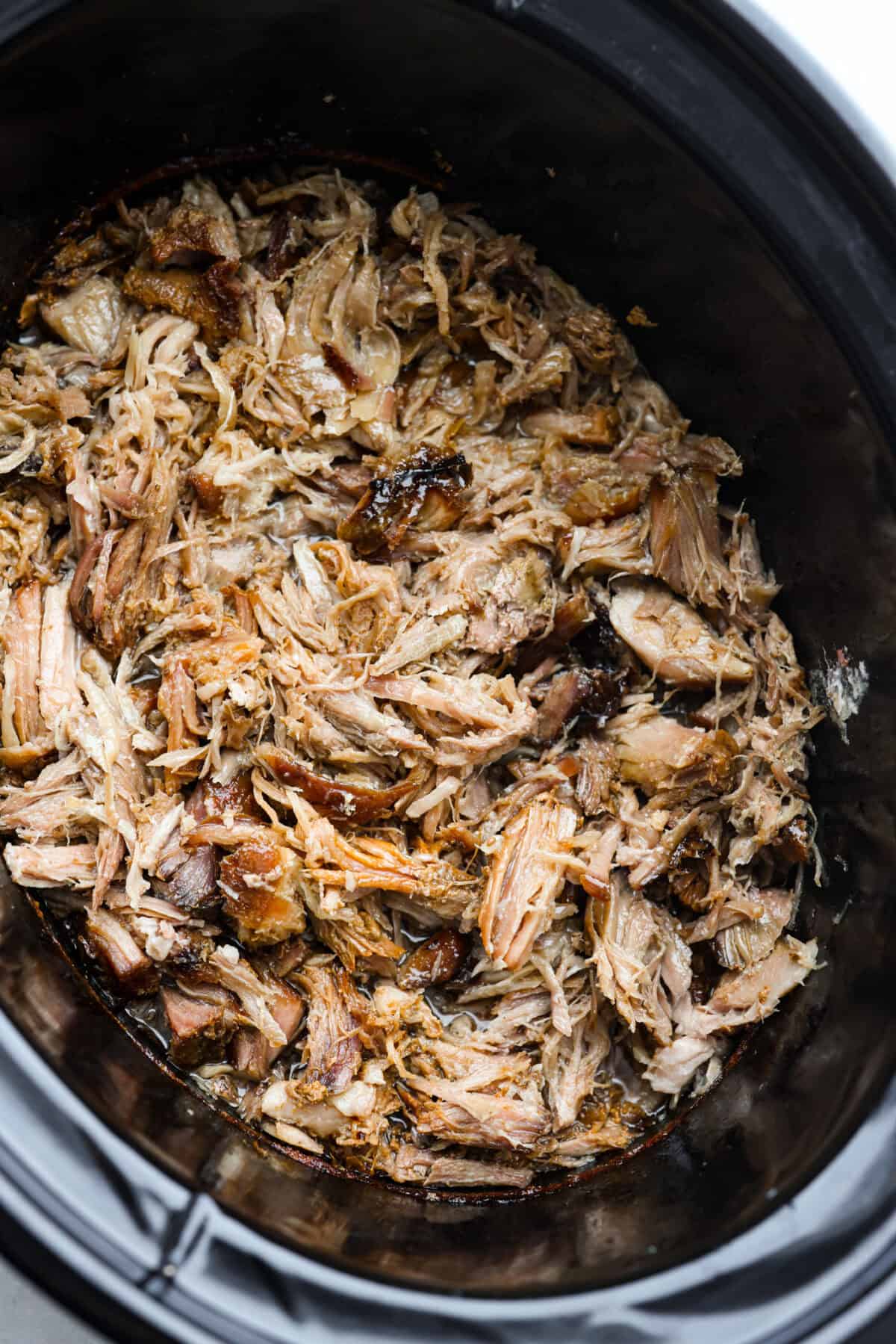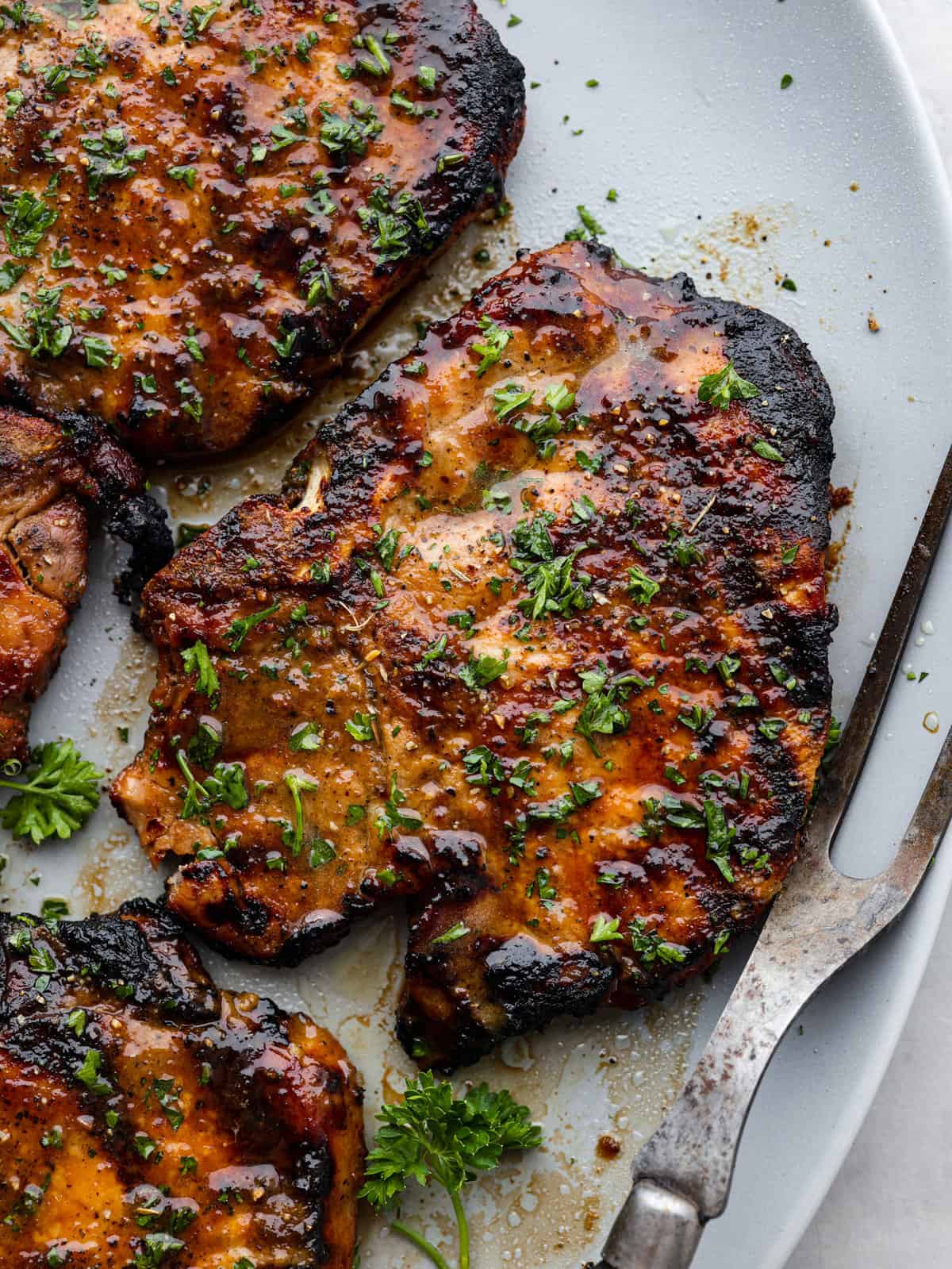

Learn the basics of using meat in the kitchen! I walk you through the different cuts of meat and help you feel confident with your delicious meat recipes. You will LOVE this helpful guide to understanding beef, pork, and chicken!
Cooking meat in the kitchen can be intimidating, but the outcome is SO worth it! From perfectly tender London broil, to fall-apart pork roast and crispy chicken drumsticks…let’s talk meat!

Reasons to Know Basic Cuts of Meat
- Saves Money: Understanding basic cuts helps you make budget-friendly choices at the store and take advantage of sales.
- Maximizes Flavor: Knowing which cuts to use and how to cook them ensures delicious, flavorful meals every time.
- Cook with Confidence: With knowledge of basic cuts, you can approach recipes with confidence, mastering different cooking techniques and flavors.
Why is it Important to Know the Different Cuts of Meat?
Understanding meat cuts is like having a secret weapon in the kitchen—it elevates your cooking game and helps you in all of your shopping decisions. Each cut cooks differently, has different amounts of flavor, and really should be picked correctly so it can be the star of the show. Understanding these cuts will make you feel like a culinary expert, cooking up impressive dishes every time.
But it’s not just about cooking—it’s about saving money and feeling confident too! With meat cut know-how, you’ll shop like a pro, getting the best bang for your buck but without sacrificing taste. This guide to understanding the different cuts of meat will change how you look at cooking. You will love how your recipes turn out because they will be packed with flavor.
Different Cuts of Beef
Let’s dive into beef! Here are the main cuts and where they come from:
- Chuck: From the shoulder area, chuck is tough and fatty, perfect for ground beef and slow-cooked dishes like pot roast.
- Rib: Ribs 6-12, excluding the first five, offer tender, juicy cuts ideal for grilling or roasting. Think prime rib or ribeye steaks.
- Loin: Between the ribs and hind legs, the loin is split into short loin and sirloin. Short loin cuts like T-bone and Porterhouse are leaner, while sirloin cuts are flavorful but a bit tougher.
- Round: From the hind legs, these cuts are lean and tough. They’re great for roasting or braising, especially after marinating. The marinade adds flavor and tenderness.
- Flank: Located below the loin, flank steak is lean and perfect for grilling. Marinate it to tenderize, then slice thinly for stir-fries or tacos.
- Plate (Short Plate): From the belly, these cuts are flavorful but need longer cooking times. They are great for braising because it keeps them moist and tender.
- Brisket: From the chest, brisket is tough and best for slow cooking methods like smoking or braising because it becomes incredibly tender and flavorful.
- Shank: From the legs, above the knee. Very lean and tough, shank cuts are ideal for stews and braising, turning into rich, comforting dishes.

Know Your Beef Grades
Here’s how to know the quality of beef you are buying:
- Prime-Grade: The highest quality of beef with most marbling! Tender, juicy, and full of flavor. Commonly served at high-end restaurants and steakhouses.
- Choice-Grade: This still ranks as a high quality beef, but has less marbling than prime. Filets are often choice-grade beef cuts.
- Select-Grade: Select is the lowest quality of the 3 grades. It is typically a tougher and leaner cut of meat. Select has less marbling than higher grades and can lack flavor.
Different Cuts of Chicken
Next, let’s talk chicken! Here’s a quick breakdown of its main cuts:
- Breast: Found in the chest, including the tenderloin. It’s lean, white meat, available bone-in, boneless, or thinly sliced. Extremely versatile because you can cook it any way you like.
- Thighs: The upper leg, between the hip and knee, is rich, fatty, dark meat with more flavor than the breast. Available bone-in and skin-on, but boneless and skinless is my go-to. They’re an affordable alternative to breast meat.
- Drumstick (Leg): The lower leg portion, perfect for handheld bites. Dark, flavorful meat that’s great for frying or baking, especially with rubs and marinades.
- Wings: The ultimate finger food! Dark, flavorful, and easy to cook, wings are affordable and made up of the drumette, wingette, and wing tip.

Different Cuts of Pork
Let’s talk about the pig! Here’s a breakdown of the main cuts of pork:
- Leg: This includes the hind leg and rump, often called “the ham.” It’s best cooked low and slow for a flavorful result.
- Loin: Located behind the shoulder to the back leg, this section has the most tender cuts like tenderloin, chops, and baby back ribs. These are easy to cook and perfect for roasting, searing, or grilling.
- Shoulder: This area includes the neck, shoulder blade, and upper front legs. It’s high in fat and tough, making it great for low and slow cooking methods like braising or smoking. Common cuts are picnic shoulder, Boston butt, and pork blade steaks.
- Belly: The underside and sides of the abdomen, known for being very fatty. Cuts like bacon, pork belly, and spare ribs are best when some fat is rendered down, so try frying, searing, smoking, or grilling.

Why Marinate?
Marinating your meat enhances the flavor, adds moisture making it extra juicy, and tenderizes your meat. Try marinating cheaper cuts of meat like skirt steak to add flavor and tenderness. Then give my favorite marinades a try for steak, chicken, and pork!


Is Bone-in Better Than Boneless?
Absolutely! Here’s why bone-in is often the way to go:
- More Tender and Juicy: Bones help keep the meat juicy and tender as it cooks. Think of it like a natural flavor shield!
- Bursting with Flavor: Bones add extra yumminess to your dish. They release savory goodness that makes your meal taste even better.
- Less Expensive: Bone-in cuts are often cheaper because you’re paying for meat plus bonus flavor. More bang for your buck!
- Keeps Its Shape: With bones in the mix, your meat holds its shape better while cooking. It’s like having a built-in support system.
- Cooks Slower: Bone-in cuts take a bit longer to cook, but that slow process means more flavor and tenderness in the end.

How to Save Money When Buying Meat
Knowing your meat cuts helps plan meals based on weekly sales. For instance, when chicken breasts are on sale, I grab extras to freeze for later! Here are some ideas for all of the different cuts of meat:
- Beef: Swap out pricier cuts like ribeye for more affordable flat iron steak. Is prime rib too costly? Try strip loin or sirloin instead. And if flank steak is breaking the bank, then give skirt steak, tri-tip, hanger steak, or round steak a try.
- Chicken: Go for the flavorful and budget-friendly chicken thighs instead of pricier breasts. Use boneless, skinless thighs in recipes calling for breast meat. Snag whole chickens for the best bang for your buck then break cut them down into pieces at home.
- Pork: Pork is a budget-friendly option! When beef roasts are too pricey, opt for pork roasts instead. Save even more by purchasing a whole pork loin and slicing it into chops at home. And for a leaner, cheaper option to pork butt, consider picnic pork—it just needs a bit more time to tenderize.
Internal Meat Temperatures
It’s important to cook your meat at safe temperatures! Chicken and pork have consistent safe internal temperatures, while beef can vary depending on the recipe. For steaks, you can choose your preferred doneness, but I’ve provided a safe range below for most meat dishes.
- Chicken: Cook to an internal temperature of 165°F (74°C).
- Beef: Cook to an internal temperature of 140-160°F (60-71°C).
- Pork: Cook to an internal temperature of 145°F (63°C).







